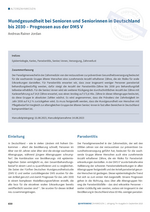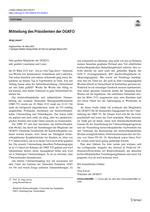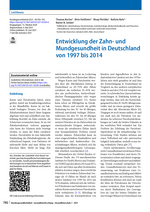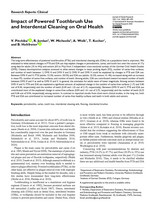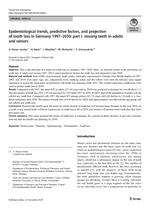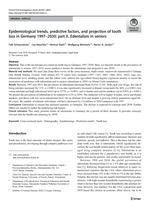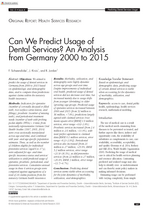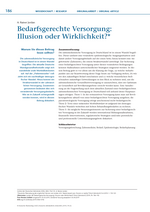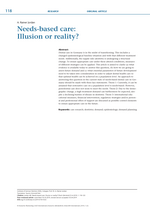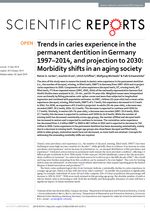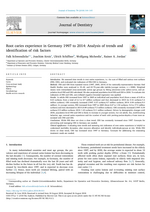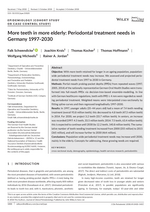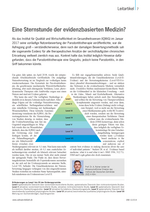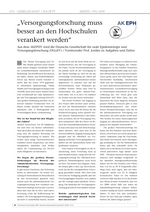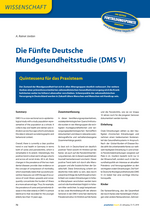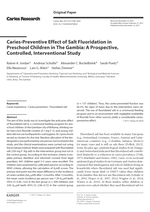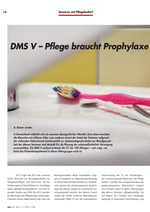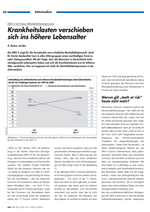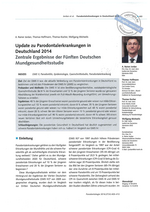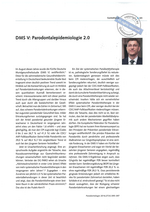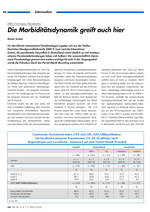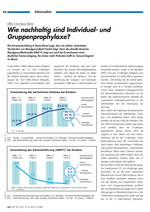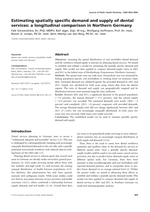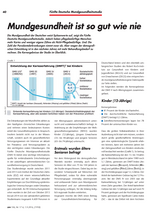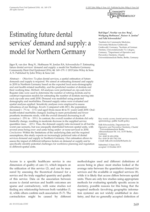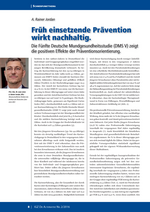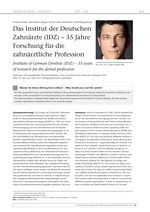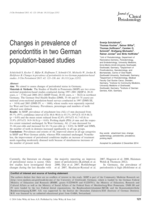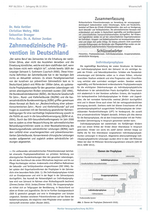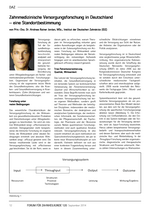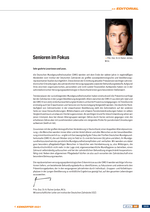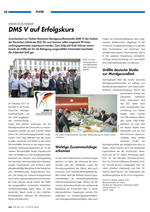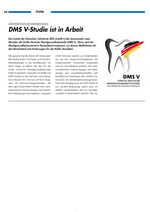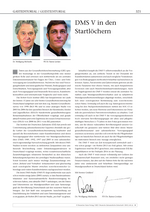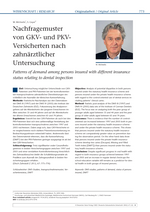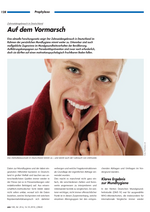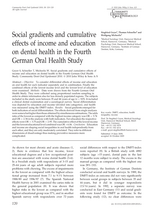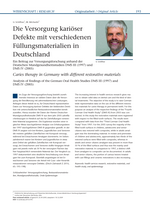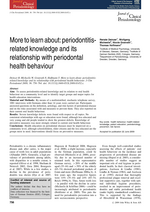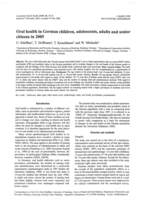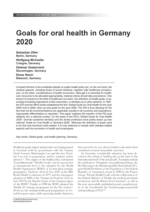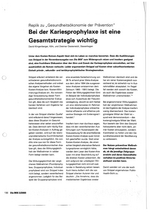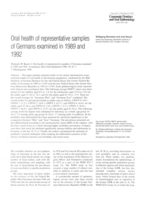
Gesundheitsversorgungsforschung und -epidemiologie
Autoren
Schützhold, Svenja
Holtfreter, Birte
Hoffmann, Thomas
Kocher, Thomas
Micheelis, Wolfgang
Schlagwörter
National oral health studies
Dental caries
Adult
Epidemiologic studies
Cross-sectional survey
Publikation — Zeitschriftenbeiträge
Titel
Trends in dental health of 35- to 44-year-olds in West and East Germany after reunification
Titel kurz
J Public Health Dent
Titel Ausgeschrieben
Journal of Public Health Dentistry
ISSN
1752-7325 (Electronic); 0022-4006 (Linking)
Jahr
2013
Ausgabe
73
Issue
1
Seitenzahl
65-73
Erscheinungsdatum
01.01.2013
Trends in dental health of 35- to 44-year-olds in West and East Germany after reunification
OBJECTIVES: The German reunification (1990) resulted in huge social upheavals in East Germany involving changes in health-care systems. We aimed to assess the changes of dental health between 1989 and 2005, hypothesizing that dental health converged in West and East Germany.
METHODS: We evaluated data from 855 East and 1,456 West Germans aged 35-44 years from the cross-sectional German Oral Health Studies (Deutsche Mundgesundheitsstudien) conducted in 1989/92, 1997, and 2005. Regression models were applied to assess associations between region, survey year, their interactions and variables assessing dental disease status [number of decayed (DT), missing (MT), and filled teeth (FT), the DMFT-index, the probability of having </= 20 teeth and the number of sound teeth (ST)], adjusting for potential risk factors for caries.
RESULTS: After a slight increase of MT between 1989/92 and 1997 (West: 3.6 to 3.6; East: 4.5 to 4.9), numbers of MT considerably decreased between 1997 and 2005 (West: 3.6 to 2.2; East: 4.9 to 3.1). East Germans had consistently more MT. Numbers of FT, DT, ST, and the DMFT-index equalized at the latest in 2005. The East German DMFT-index increased between 1989/92 and 1997 and slightly decreased between 1997 and 2005, whereas the West German DMFT-index steadily decreased between 1989/92 and 2005.
CONCLUSIONS: Dental health converged in West and East Germany, but the higher number of MT in 2005 indicates that East Germany was not able to catch up completely with West Germany.


